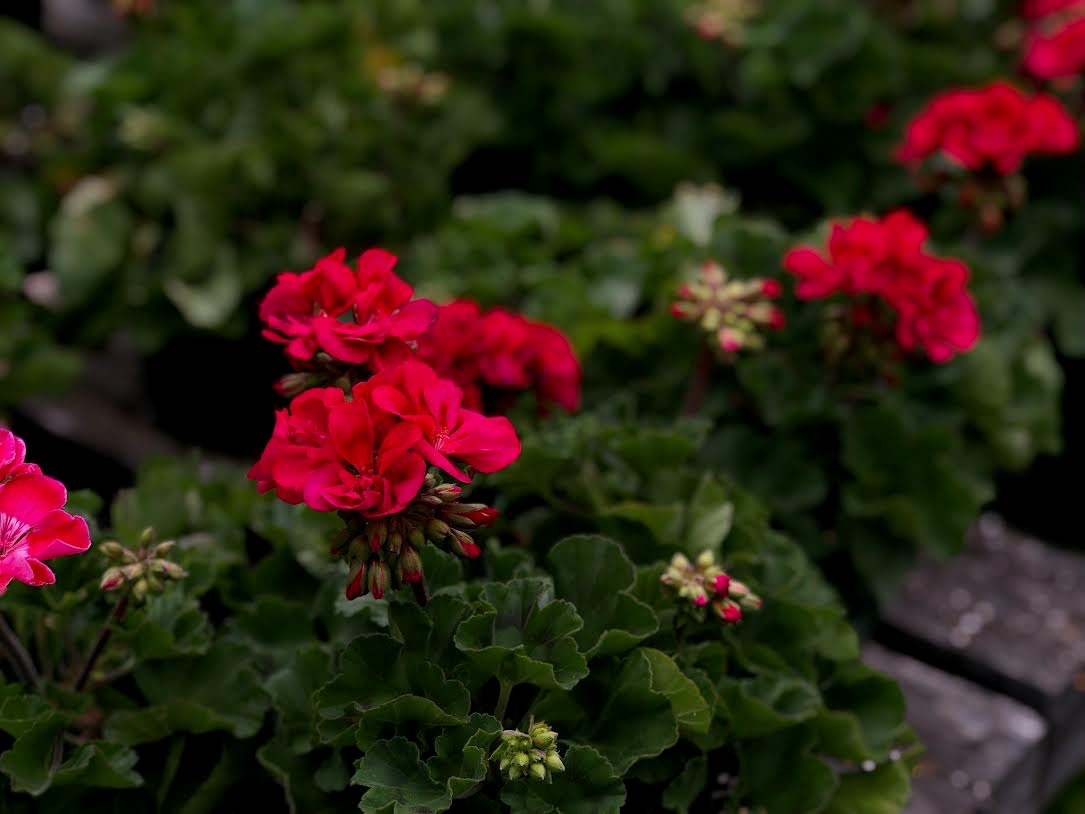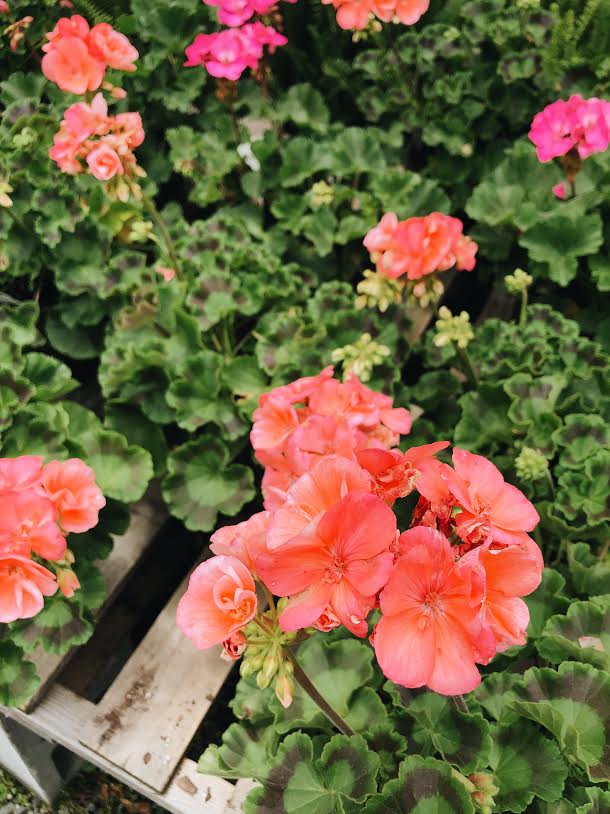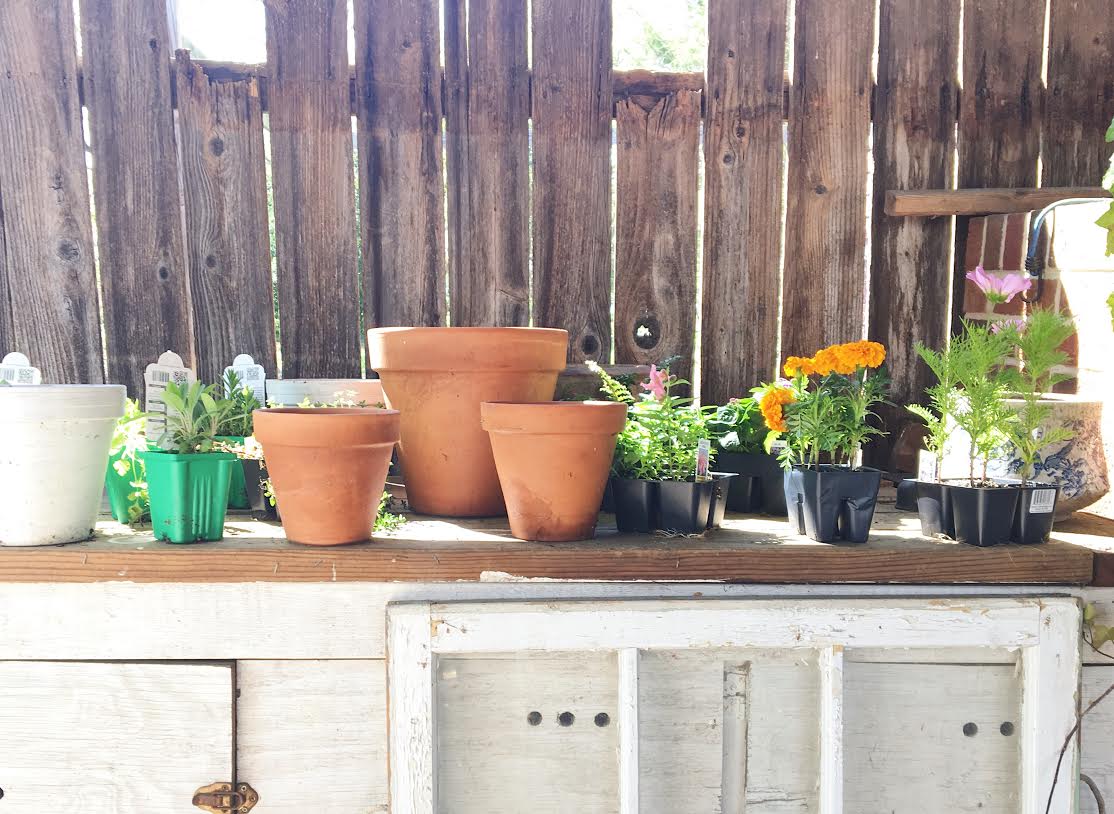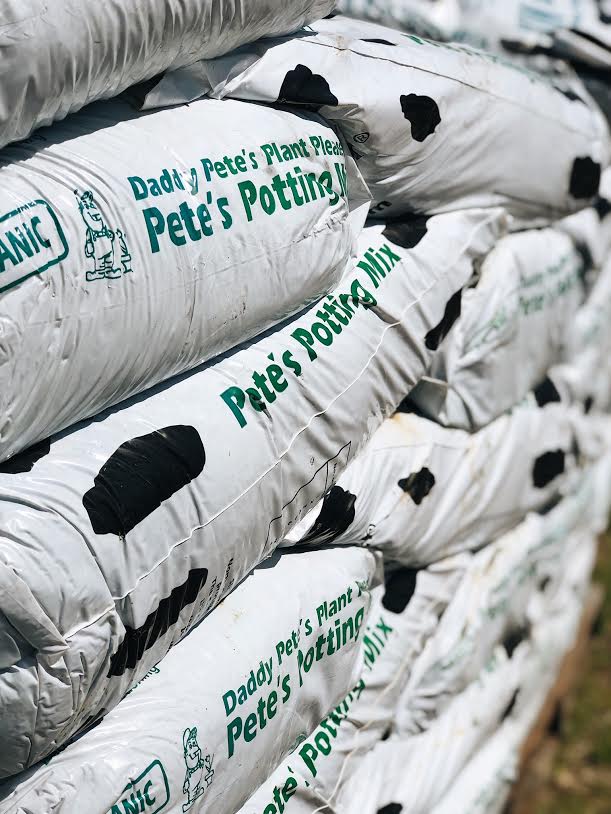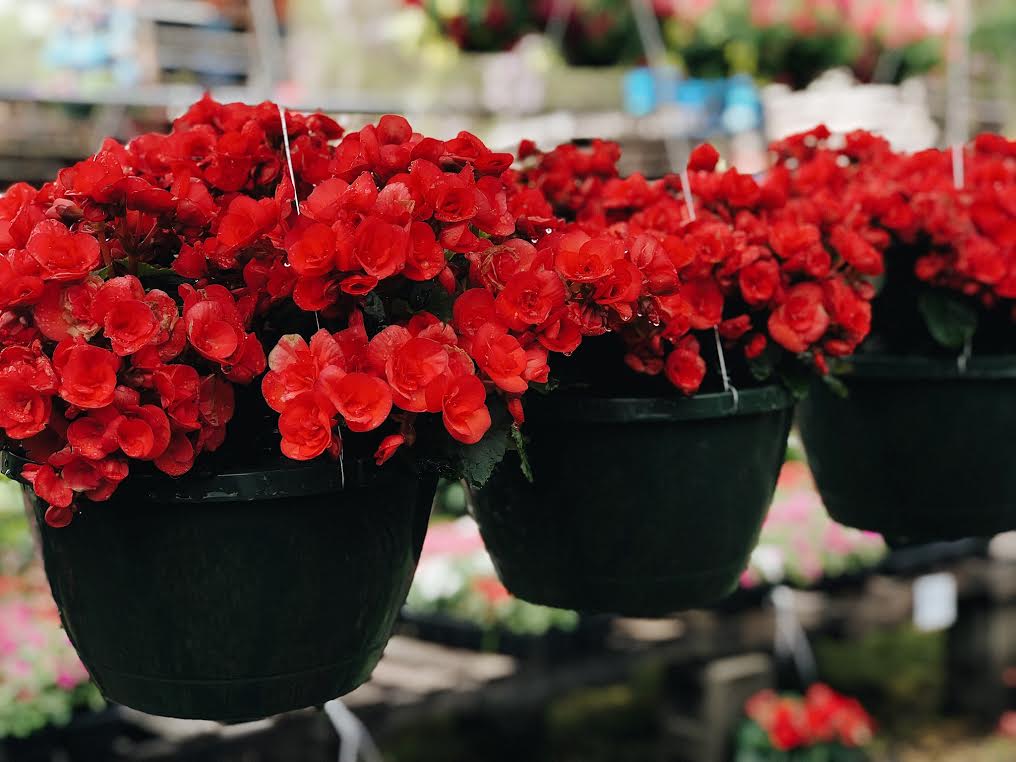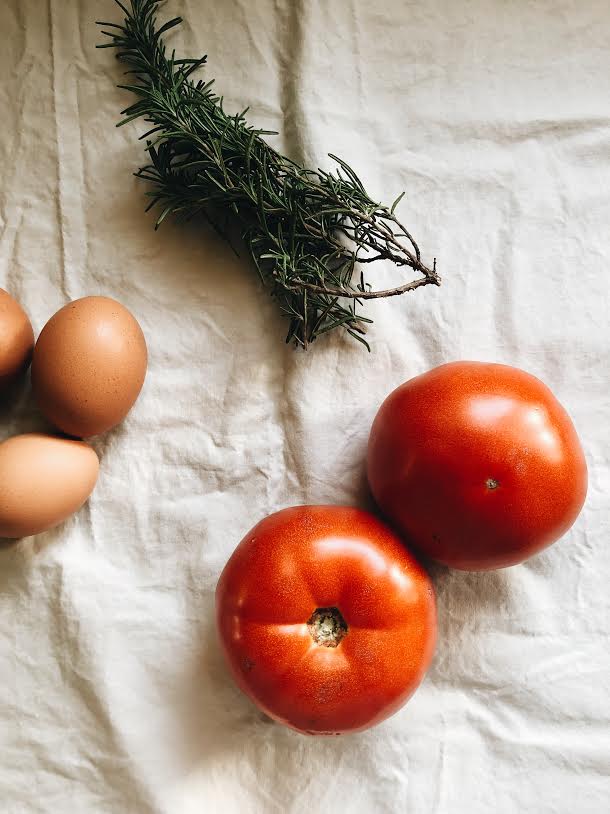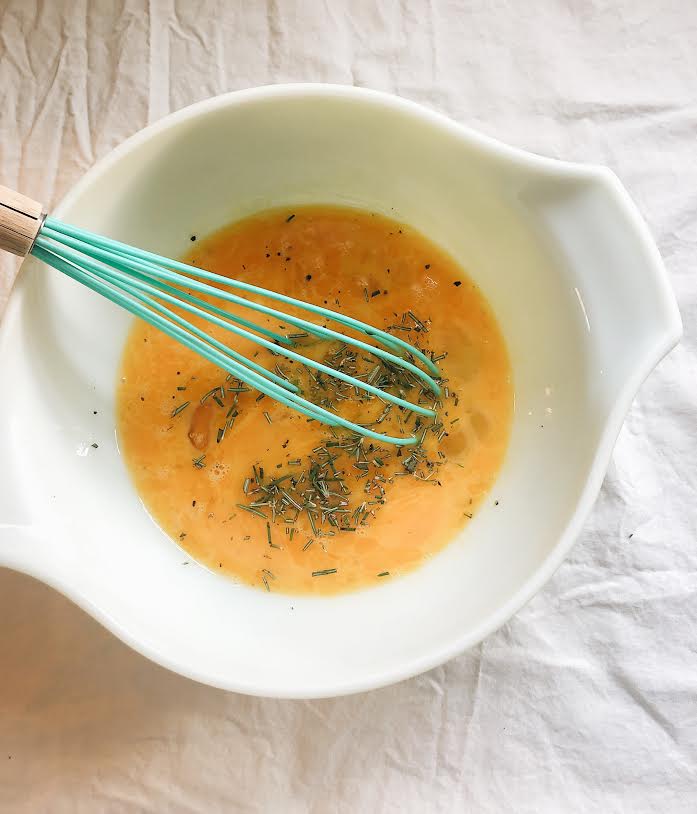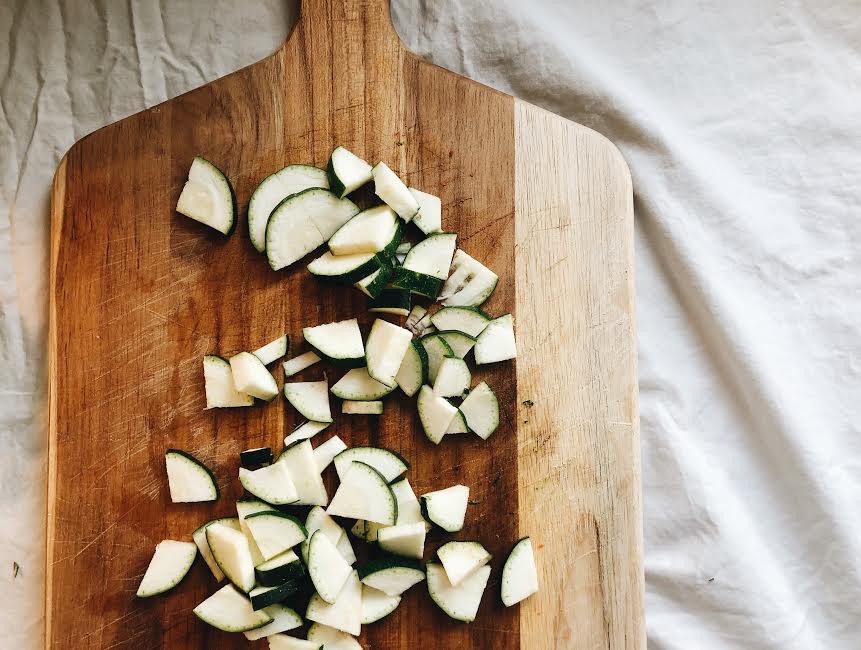
B L O G
How To Care For Geraniums
Geraniums are a beautifully colorful and fragrant option to give you all the spring and summer gardening vibes. They have over 250 species, are low maintenance (once you learn their needs), and make a great addition to your garden…
Geraniums are a beautifully colorful and fragrant option that give you all the spring and summer gardening vibes. They have over 250 species, are low maintenance (once you learn their needs), and make a great addition to your garden.
When healthy, Geraniums are full of lush blooms and filled with green leaves, so they make a great addition to cover the base of shrubs. They are also beautiful in window boxes, in a hanging basket, in single pots on their own, or in an eclectic mixed container. And not only do these beauties smell amazing, but they also help to repel insects… mosquitoes in particular. Geraniums can be grown outside and indoors, making this plant very versatile.
DID YOU KNOW…
…that when most people think of geraniums, they are actually thinking of what is called a Pelargonium, and Pelargoniums are not a “true” Geranium. Because in 1789, Geraniums were separated into two genus species, one of them being Pelargonium. But for reference, we will refer to Pelargoniums as Geraniums for this article… because it’s easier to say and write.
How To Care for Geraniums
Geraniums have very specific needs, but once they are learned, you’ll see that these beautiful plants will thrive and be the next show stopper piece for your garden, front porch, or back deck.
Where to Grow.
+ Indoors. Geraniums need a minimum of moderate light indoors, but more blooms will be yielded if they receive heavy light. Also, if you’re more interested on growing Geraniums indoors, check out this blog post over on Balcony Garden Web.
+ Outdoors. If growing outside, place your Geranium in a spot that receives FULL SUN (minimum of 6 hours of sunlight). If you are in a climate where the temperature reaches above 90 degrees, you also might want to consider planting your Geranium where it receives morning sun, but afternoon shade.
When and How to Plant.
Plant your geraniums only after the threat of a frost has passed. You can check your individual tags on the specific type of geranium you have purchased, but generally, you will want to space them 8”-12” apart.
Soil.
Geraniums love a slightly acidic, well-draining soil. If planting in a pot, you can easily accomplish this by adding moss to your soil, and covering the base of your pot with rocks to allow for better drainage.
Watering.
Geraniums can be prone to root-rot, so you should only need to water them weekly. Allow the soil to dry out completely, and then give it a good soaking.
How to Water: Soak your geranium at the level of the soil of the plant thoroughly. Be careful to avoid getting the leaves and blooms wet. This can cause rotting/disease of the leaves and burning of the blooms (when in the sun).
Pruning.
You can prune Geraniums by pinching off the end of the stem. This allows for two new growths to happen in its place, and will also produce a more “full” looking bush.
So where can you even get these gorgeous plants? We have TONS of options available for purchase at each of our locations at Garden Valley Farmers Market. We are local to the following locations in North Carolina: Greensboro, Haw River, Graham, Elon, and Burlington. So stop by today, and see just how beautiful these gorgeous plants really are.
Comment below and tell us what your favorite colors are!
8 Most Common Gardening Mistakes
Gardening can be such an exciting experience. With Pinterest and our neighbors' beautiful homes as inspiration, we can plan our future spring garden in hopes that we achieve those huge blossoms and healthy vegetables. And all of those dreams are awesome... except when those plants don't actually grow, and we're left feeling disappointed and discouraged. Good thing we, at Garden Valley Market, are here to help you prepare this spring! Here are 8 of the most common gardening mistakes we hear about, and how you can avoid them.
Gardening can be such an exciting experience. With Pinterest and our neighbors' beautiful homes as inspiration, we can plan our future spring garden in hopes that we achieve those huge blossoms and healthy vegetables. And all of those dreams are awesome... except when those plants don't actually grow, and we're left feeling disappointed and discouraged. Good thing we, at Garden Valley Market, are here to help you prepare this spring! Here are 8 of the most common gardening mistakes we hear about, and how you can avoid them.
1. Bad Soil
Different plants need different types of soils. How do you know what soil your specific plant needs? Often times googling it is great, but you can also ask your local garden center when purchasing your plant. Did you know you can test your ground's soil compost to see what type of soil you have? Testing your soil will help guide you when choosing which plants will grow in your yard.
Another important thing to remember when gardening is that unhealthy soil will only produce an unhealthy plant. Making sure that your plant get's the best nutrients from its root is essential to your plant's life. That’s why we love to carry and use Daddy Pete’s Plant Potting Mix at our stores here in Burlington, North Carolina. This soil is organic and makes a great all purpose soil for pretty much anything- pots, beds, shrubs, etc. The soil protects your plants from the elements, and also prevents those pesky weeds from growing. The soil plays a huge role in your plant’s life, so remember to stop by Garden Valley Market to get a good quality soil that will keep your plants happy and healthy all season long!
2. Wrong Zone
It's very important to check your plant for what zone it is able to grow. This information can usually be found on the tag of the plant. For example, a tropical hibiscus would probably not last very long in a cold climate like Minnesota. Or the beautiful snapdragon, which loves the mid 70s weather, but a hot summer in a hot state might cause them to burn out. If you keep in mind which climate/zone you live in, and make your choices based off of that information, it might save you some heart ache and frustration in the long run.
3. Not Fertilizing
Technically, you don't HAVE to fertilize. However, if you're wanting a hardy harvest or an abundance of healthy flower petals, it is definitely recommended. Fertilizing once every four weeks is usually a good start, but be careful not to over-fertilize, as this can stress the plant out by growing too quickly. Also, there are great natural ways, found at this blog, to fertilize your garden if you're not wanting to use chemical-filled fertilizers. There’s an option for everyone!
4 .Watering Incorrectly
This is probably the most common mistake and complaint that we receive from customers here at Garden Valley Market. It's important to know what your plant's watering needs are if you're wanting to keep it healthy and happy.
Lack of watering is simple to understand.
A great sign of this is when your plant has limp leaves that have not turned yellow, but look dull and lifeless. (For example, when you come back from a week long vacation and your petunia hanging basket is crispy… that's probably due to a lack of watering.)
Overwatering a plant can sometimes be difficult to notice, however, until it’s too late.
Usually overwatering will produce yellowing, and LIMP leaves.
Tips To Prevent Overwatering:
+ Make sure there is good drainage in your soil and that
there is a hole in the bottom of the pot that water can
drain from to prevent root rotting
+ Terra cotta pots are not only cute, but they allow
moisture to evaporate more efficiently, as opposed to a plastic pot
+ With potted plants, stick your index finger in
the soil to the first knuckle. If it is moist, hold off on
watering and check back again later.
+ When grouping plants together, make sure they
have the same watering needs
Make Watering Easier By:
+ Choose a hose with plenty of length to spare
+ Consider a soaker hose for bigger gardens
+ Have someone come to your house to water your plants when away
+ Avoid spraying the top of the plants to prevent burning of the leaves
5. Timing
Did you know that planting too early or too late can set you up for failure? For example, depending on what zone you are in, you might want to plant your tomatoes in late winter, or early spring, to allow for PLENTY of time for your plant to grow and mature. Also, sometimes a plant needs more time to establish their root before growing. For example, a peony does best when planted in the Fall and will generally grow better than those planted in the Spring.
6. Plant Overload
Sometimes we can buy too many plants, and not have enough time to maintain them, or even plant them for that matter. When shopping for a plant, remember to reign in on the excitement, and think of what your garden needs, and start from there. Making lists are a great way to help keep up with this. You can always make another trip, especially to Garden Valley Market where you’re always welcome!
Also, remember that when planting, space it out with the mature plant in mind. Give your plants enough space to grow, because a crowded plant can sometimes produce more pests and diseases. Plants also tend to compete for water and nutrients when planted too closely together. Look at the recommended spacing instructions on the tag of the plant, and that will allow you to gauge how much space is needed.
7. Bad Placement
When deciding on what plants you are wanting to purchase, remember to look at the tag for sunlight recommendations. (For example, you wouldn't want to buy a petunia hanging basket, which requires full direct sun, for your covered porch that receives no direct sun.)
But what does "full sun" or "part shade" even mean?
Here is a general explanation of the terms:
+ Full Sun: 6+ hours of direct sun
+ Part Sun: 4-6 hours of direct sun
+ Part Shade: 4-6 hours of cooler sun (usually morning sun as it's not as hot)
+ Shade: Less that 4 hours of sun
8. Being Too Hard On Yourself
You don't have to be perfect to garden. Repeat it to yourself. You don't have to be perfect. The true beauty of gardening is not getting it "right" the first time. It's the growth that takes place in your soul, and in your mind. The knowledge and wisdom that you receive from the plants is sometimes better than succeeding. And remembering that when it doesn't go right, or perfect, we can always try again, and that is what's life-giving about gardening. Because each time you try, you get better, you learn, and then you get to look back and see how much growth has taken place in your garden, and in you.
Rosemary, Vegetable Medley Frittata
This time we decided to make a vegetable medley frittata, including our vine-ripened tomatoes, fresh zucchini and onion, hand picked rosemary directly from a local garden, and some fresh local farm eggs provided by a local family here in Burlington, North Carolina…
We, at Garden Valley Market, are SO glad that Spring is here, and one of the main reasons is because of delicious recipes made with FRESH and LOCAL vegetables. There are so many recipe options, but we can only choose one. This time we decided to make a vegetable medley frittata, including our vine-ripened tomatoes, fresh zucchini and onion, hand picked rosemary directly from a local garden, and some fresh local farm eggs provided by a local family here in Burlington, North Carolina.
When picking out your produce, it’s important to examine each piece and choose it according to your needs. Asking yourself the questions like:
When am I going to be using this zucchini?
How big of an onion am I needing?
How ripe of a tomato will I need for my recipe I’m making tomorrow?
Where is this grown?
Those are all questions that our staff at Garden Valley Farmers Market can help you with if you’re unsure. And that’s why shopping local can be so much better than going to other stores. Why? Because we only buy from farmers who grow grade 1 produce. We also only provide field grown produce, and absolutely no hot house. We stand behind our product and want nothing but the best produce for you, especially when you’re making yummy recipes, like a Frittata, for your family.
WHAT IS A FRITTATA?
Basically it’s an omelet, but it’s cooked faster than an omelet, and usually served at room temperature.
Frittatas are also great because they don’t take a ton of time to prepare, and they can usually serve a large group (unless you have a family that likes to EAT, then you might want to serve up two of these).
add eggs and spices to bowl
whisk rosemary, salt, and pepper together with eggs
chop up veggies
combine all of veggies into skillet and cook for about 7 minutes
add handful of kale into mixture and cook until wilt
pour egg mixture over vegetables and cook until edges start to set
cook in oven at 350 F for about 15 minutes, then on broil HIGH for about 2 minutes
let sit for 5 minutes, then serve
ROSEMARY, VEGETABLE MEDLEY FRITTATA
Servings 8-10 people
Total Time 30 minutes
INGREDIENTS
+ 8 large eggs
+ salt and pepper to taste
+ olive oil (for the pan)
+ 1 small better boy tomato
+ 2 sprigs of rosemary
+ 1/2 medium sized red pepper
+ 1/2 medium sized zucchini
+ 1/2 small vidalia onion
+ handful of fresh kale
(optional- feta cheese for garnish)
INSTRUCTIONS
+ Preheat oven to 350 degrees F with rack in center position.
+ In a bowl, combine the eggs, sale, pepper, and rosemary. Whisk well.
+ Heat olive oil in a 10-inch cast iron skillet over medium heat.
+ Add red bell pepper, onion, tomato, zucchini. Sauté until softened, about 7 minutes.
+ Add kale to vegetables and cook until it starts to wilt.
+ Distribute the vegetables evenly in skillet and pour egg mixture into skillet.
+ Cook until eggs are just beginning to set around edges, about 2-3 minutes.
+ Place skillet in center rack of oven. Bake frittata for about 15 minutes.
+ Turn broiler on HIGH for 2 minutes. Be careful to watch to prevent over-browning.
+ Remove from oven. Let frittata sit for 5 minutes before serving.
+ ENJOY!
*You can also garnish with a fresh sprig of rosemary and crumble some feta cheese for an added “wow factor” that your guests (and yourself) will LOVE.
Spring Is Here!
Spring is finally upon us;
the birds are chirping, the warm sunshine is hitting our faces, and everything is fresh and new. We, Garden Valley Farmers Market, are SO excited to start serving you and bringing you the best flowers, plants and produce that North Carolina has to offer…
Spring is finally upon us;
the birds are chirping, the warm sunshine is hitting our faces, and everything is fresh and new. We, Garden Valley Farmers Market, are SO excited to start serving you and bringing you the best flowers, plants and produce that North Carolina has to offer. Along with the excitement of Spring and the hope that it brings, we also have a few new projects up our sleeve, and we're excited that one of those new things is this updated blog.
This space is here to share updates on our stores, encourage you to start thinking more locally with your purchases, and inspire you to create a beautiful gardening masterpiece of your own. And whether you're planning your next spring garden, or searching for tips for future landscaping ideas, we want this blog to be a resource and space for you to turn. We might even include a few mouth-watering recipes that incorporate our fresh, local produce that’s grown by our local farmers across the beautiful state of North Carolina. We're excited to share with you, grow with you, and learn with you. Without further ado, we welcome you to the blog of
Garden Valley Farmers Market
where we strive to plant better, eat better, and live better.
See you soon,
Your Garden Valley Farmers Market Team
To nurture a garden is to feed
not just on the body, but the soul.
-Alfred Austin



